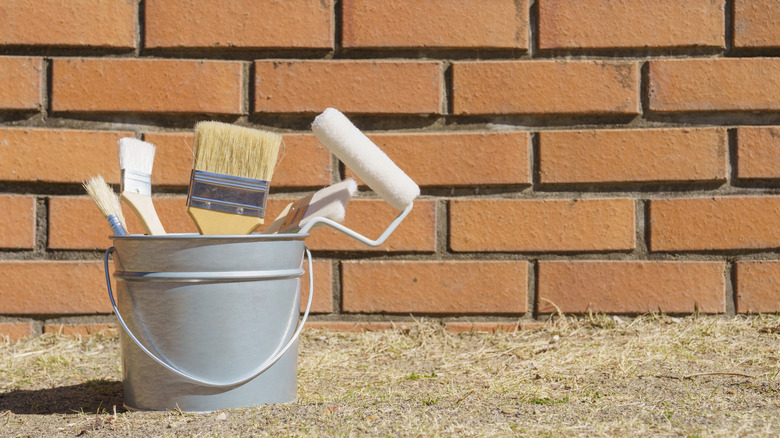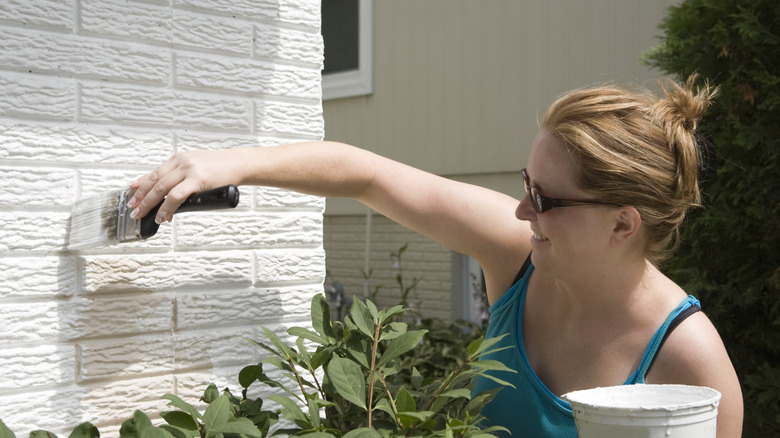How To Prep Exterior Brick For A Seamless Paint Job
We may receive a commission on purchases made from links.
Painting exterior brick isn't as easy as slapping a coat of paint on and calling it a day; proper preparation is key to a long-lasting and good-looking job. That means cleaning, inspecting for damage, priming, and finally choosing the right tools and paint.
You'll need to begin by giving the exterior brick a much-needed cleaning. Using a stiff brush and lightly soapy water, give the entire location a good scrubbing to remove grime and stuck-on dirt. If you notice stains or mildew, you can use a mix of one part bleach to three parts water to help eliminate the trouble. After cleaning, rinse the entire area thoroughly. Make sure you let the brick dry completely, and while waiting, take time to inspect your walls for any cracks or broken pieces. These areas can be repaired using a concrete patch and make for a much better paint job in the end.
Next up is the priming; without it, the brick will soak up the paint unevenly, leaving it looking blotchy. Go for a high-quality acrylic latex primer designed for exterior brick, these will seal the surface and also help the paint stay on the brick. There are also a few products that combine primer and paint, like KILZ Self-Priming Brick Paint, which works if you're looking for a neutral color. If your brick was previously painted, you'll want to find and lightly sand any glossy areas to help the primer stick.
Final steps and keeping up with your painted brick
Once your brick is cleaned, repaired, primed, and dried, you're ready to go. For brick with heavy texture, use a thick-nap roller to work the paint into the brick's crevices, and follow this with a brush for nice even coverage. Picking the best type of paint for your brick is also very important. Elastodynamic or acrylic latex paint is the best pick; it's flexible and helps prevent moisture that can build up in the brick. For best results, do two thin coats instead of a single thick one. This will help you create a uniform color and avoid drips.
Maintenance plays a big part as well. After painting, inspect your work every few months or so for chips or cracks. Small touch-ups now can help you avoid large repairs later. There are also a few common mistakes to avoid when choosing your exterior paint. If you're looking for a very specific color, make sure you test the paint on a small area prior to the job; the natural color of brick can alter the color once it's on. Also, be sure to check the weather forecast. Brick paint needs time to dry, and you don't want Mother Nature ruining all of your hard work.

